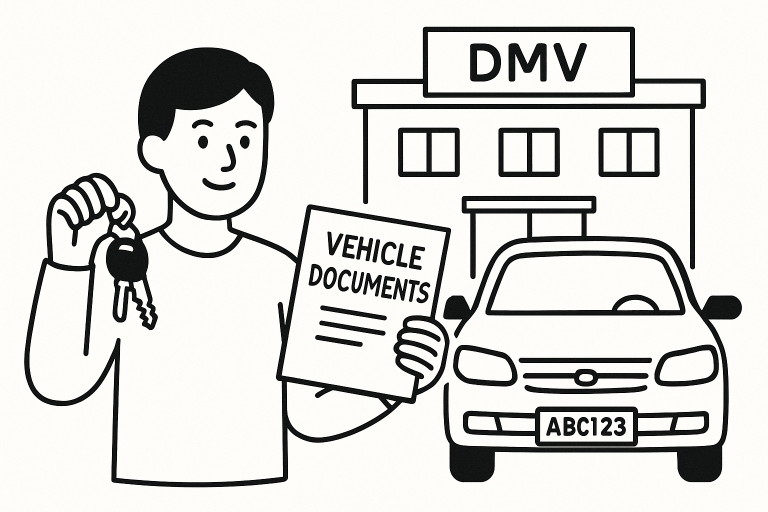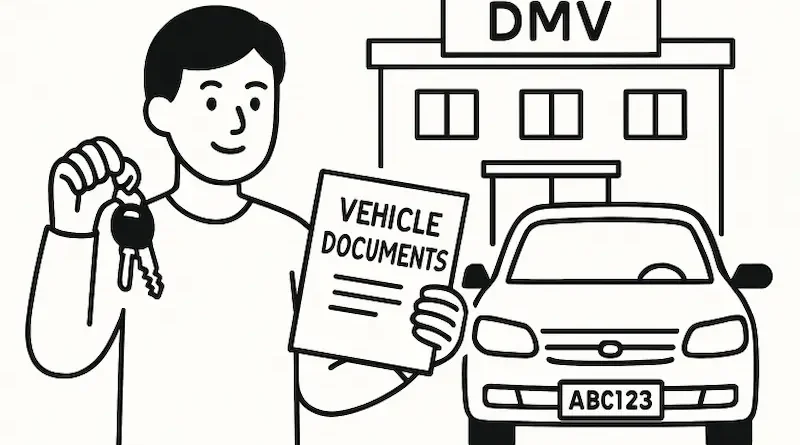How to Register a Car: Steps, Tips, and Common Questions
Registering a vehicle is a critical process for anyone who wants to drive legally on public roads. It’s more than just getting a license plate; it’s about officially recording the vehicle with your provincial or state government and ensuring you have proof of ownership and insurance. The specifics can vary by location, so understanding your region’s process is key. For those in Ontario, you can find step-by-step guidance on how to register a car in Ontario. Throughout this guide, you’ll learn what to expect, which documents you’ll need, and how to avoid common pitfalls.
It’s important to note that, while the procedures share similarities across Canada and the United States, each jurisdiction may have unique requirements regarding documentation, inspections, fees, and deadlines. By preparing ahead and understanding the expectations, you’ll save yourself time, stress, and potential fines.
Timely registration is not just a technical requirement. It ensures you’re recognized as the legal owner, helps authorities identify your vehicle in the event of theft, and is required for insurance claims. For anyone new to the process or moving to a different region, a proactive approach will make things much easier.
For residents of the United States, it’s always wise to consult the vehicle department specific to your state.

Understanding Vehicle Registration
Vehicle registration is the official record of your vehicle with a government agency, often your local Department of Motor Vehicles (DMV) or provincial Ministry of Transportation. When you register, you link your car to your name and address, ensuring you receive a numbered license plate and a registration document or sticker. This allows law enforcement, insurers, and government agencies to track the vehicle for taxation, public safety, and legal purposes.
Registration also provides a safeguard against theft and fraud. If your car is stolen, the police can use registration records to identify and recover it. In many areas, registration records are used to assess property or road-use taxes, helping fund infrastructure and public safety programs.
Steps to Register Your Vehicle
The process can vary based on location, but generally includes the following steps:
- Obtain Auto Insurance: Most jurisdictions require proof of valid auto insurance before registration is possible. Ensure your policy meets minimum coverage requirements set by your province or state.
- Gather Required Documents: Have these on hand ahead of your visit:
- Proof of ownership (vehicle title or bill of sale, depending on whether the car is new or used)
- Your driver’s license or other government-issued ID
- Proof of valid insurance
- Filled-out registration application form (usually available online or at your registration office)
- Complete Necessary Inspections: In some locations, safety or emissions inspections are mandatory. For example, many provinces in Canada require emissions testing for certain vehicle types, and some U.S. states, such as Texas, require new residents to obtain a local safety inspection at approved stations.
- Submit Your Application and Pay Fees: This is usually done at a local DMV, vehicle licensing office, or through designated service centres. You’ll deliver your documents, pay registration fees, and—if applicable—receive your license plate and sticker for immediate use.
In many places, you can also renew your registration online. However, initial registrations or transfers of ownership usually require an in-person visit. Check your local government’s website or in-person office hours to avoid wasted trips and long wait times.
Common Mistakes to Avoid
Many first-time registrants encounter delays due to common errors. Be aware of these frequent mistakes to ensure your process is smooth:
- Incomplete or Incorrect Documentation: Missing documents or small errors—such as mismatched addresses or unsigned forms—can force you to make multiple visits. Double-check all requirements on your DMV or local registration office website before you go.
- Unpaid Fees, Fines, or Taxes: If you have outstanding parking tickets, toll charges, or tax balances, many offices won’t process your registration until they’re paid. Address these in advance.
- Missed Deadlines: Most places require vehicle registration within a set period (often 7–30 days) after purchase or moving. Failing to do so could result in late fees or legal trouble. For example, in Florida, you must register a car within 30 days of becoming a resident. Other states and provinces have their own deadlines, so always verify the specifics for your area. Good sources, such as the CNN car registration guide, can help clarify different jurisdictional requirements.
Frequently Asked Questions
Can I Register a Car Without a Driver’s License?
Some locations will allow you to register a car without a driver’s license, permitting the car to be owned and insured under your name. However, driving it on public roads still requires a valid license. Always check your specific state or province’s rules before proceeding.
Do I Need to Register My Car Immediately After Purchase?
Yes. In nearly every province and state, there’s a deadline—often within a month—to register your car after buying it or bringing it from another jurisdiction. Delays can lead to penalties or denial of future renewals.
Can I Register My Vehicle Online?
While many regions now offer online renewal services, the initial registration, transfer of ownership, or registration of imported vehicles may still require in-person processing due to identity verification and document checks.
Conclusion
Registering your vehicle is an essential part of legal ownership and operation. The process doesn’t have to be daunting—start by reviewing your local government’s requirements, gathering your documents, and staying on top of deadlines. Whether registering your first car or re-registering after a move, being diligent ensures a smooth, penalty-free experience. For the most reliable, up-to-date details, consult your area’s DMV or transportation website, and keep current with best practices using authoritative sources.

